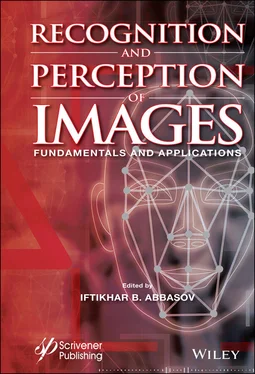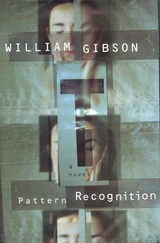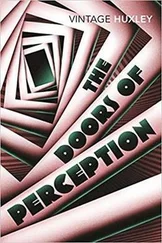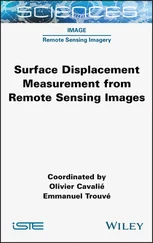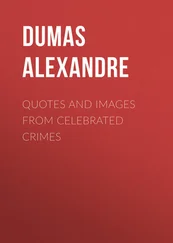1.5.5 Illusions of Muller-Lyer, Ponzo, Poggendorf, Zolner
Figure 1.5.4presents the well-known geometric illusion of Franz Muller- Lyer (1889). There are many theories to explain this illusion, the hallmarks of a stimulus are the tips of linear segments, which are directed in different directions. The upper segment seems to be longer than the lower one, although they are physically identical.
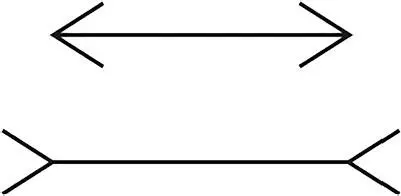
Figure 1.5.4 The illusion of Muller-Lyer.
Figure 1.5.5shows the illusion of Ponzo; the horizontal segments are the same in length, but against the background of the perspective lines, the distant segment appears several times longer.
Figure 1.5.6shows the illusion of Poggendorf and Zolner. Zolner’s illusion is that long parallel lines intersected by short diagonal lines seem to diverge. Poggendorf’s illusion is based on the apparent displacement of diagonal segments intersecting parallel lines.

Figure 1.5.5 Illusion Ponzo.

Figure 1.5.6 Illusion of Poggendorf and Zolner.
1.5.6 Horizontal – Vertical Illusion
Figure 1.5.7, on the right, shows a horizontal-vertical Wundt illusion. It seems to the observer that the vertical line is longer than the horizontal one, although these lines are equal in length. In order for the horizontal line to appear equal in magnitude to the vertical, it must be 30% longer ( Figure 1.5.7, right).
1.5.7 Illusions of Contrast
The illusion of contrast lies in the distortion of the perception of stimuli, due to the influence of the opposite, contrast or contextual stimulus. These include the illusions of Ebbingauz, Yastrov, Baldwin. The two inner circles are identical, but the area of the left central circle on the left seems larger because it is surrounded by smaller circles, and the area of the circle on the right is smaller, as it is surrounded by larger circles. Presented in Figure 1.5.8on the right, Yastrov’s illusion also illustrates the effect of contrast on the perception of magnitude. The lower curved figure appears longer than the upper figure, although they are identical.
It should be noted that any signal is rarely perceived in isolation; therefore the connections between the signal and its context can influence the process of perception. Figure 1.5.9shows Baldwin’s illusion: two pairs of squares of different sizes are connected by jumpers of the same size. The central jumper between the lower squares of a larger size seems a bit shorter than the one between the upper squares. The squares bounding these lines affect the perception of their length and lead to its distortion. Therefore, we cannot neglect the existing context, affecting the perception of the main signal.
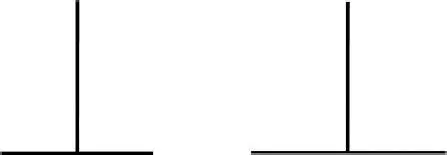
Figure 1.5.7 Horizontal Vertical Wundt Illusion.

Figure 1.5.8 Illusion of Ebbingauz and Yastrov’s.
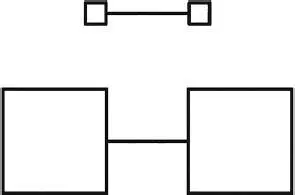
Figure 1.5.9 Influence of context on apparent length, Baldwin’s illusion.
In Figure 1.5.10, on the left are the illusions based on the contrast of the slope; the vertical lines appear to be inclined in the direction opposite to the slope of the surrounding background lines. The effect of contrast is illustrated by the illusions of Wundt and Goring ( Figure 1.5.10, right).
Both pairs of horizontal lines are straight lines parallel to each other, but in Wundt illusions, they seem to be “bent” inward, and in Goring’s illusion, outward. A similar distortion of perception as a result of the contrast between two adjacent fragments is also characteristic of the Fraser illusion ( Figure 1.5.11) [Website istockphoto, 2020].
The contrast between adjacent white and black rectangles distorts the perception of physically parallel lines in the illusion of Münsterberg ( Figure 1.5.12). The illusion of non-parallelism is strong enough, it can only be destroyed with the help of a ruler.
Many visual illusions are the result of the combination of various illusory effects. For example, the Zander parallelogram presented in Figure 1.5.13also contains the components of the Muller-Lyer illusion [Abbasov, 2019].
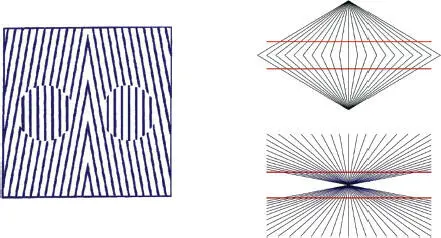
Figure 1.5.10 Illusions based on contrast tilt.
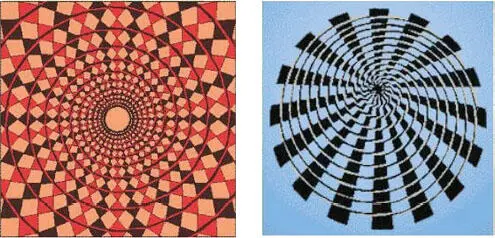
Figure 1.5.11 Fraser’s Illusion.
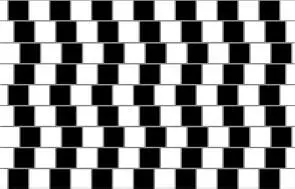
Figure 1.5.12 Illusion of Münsterberg.

Figure 1.5.13 Zander parallelogram, AB and AC are equal.
The survey of some current lines of research in the field of visual information perception is represented in the first section. The peculiarities of eye anatomy of vertebrates, the structural elements of the visual system, the process of senses organization and perceptual organization of visual information by the brain are analyzed.
The second section is dedicated to the visual system and types of eye movements. The structure of eye bulb, types of eye movements and current methods and means of eye movements recording are described. Moreover, the questions relating to the perception of contour, light contrast and types of color sensation disorders are discussed.
The third section considers the process of perception of figure and ground. Some current studies are presented, and the concepts of figure and ground are defined. The factors of gestalt grouping, subjective contours and recognition of images in space are regarded.
The fourth section is dedicated to the perception of external environment, peculiarities and signs of monocular and binocular vision. The fifth section analyzes the process of perceptual organization and constancy factors, as well as kinds of visual illusions and reasons of their occurrence.
Abbasov I.B. Fundamentals of graphic design on a computer in Photoshop CS6 (textbook, third edition) M.: DMK Press. 2013. 238p.
Читать дальше
